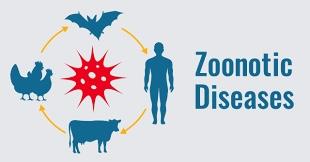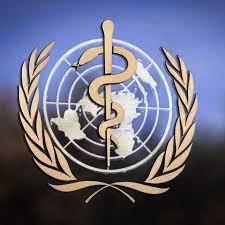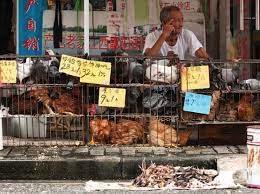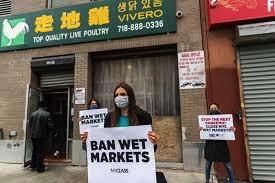A July 7th article in The New York Times highlighted the risk of zoonosis emerging in the U. S. The article suggested, with justification that the U.S. population is as vulnerable as those in Africa and Asia, given the volume of importation of live animals, the presence of live-bird markets in urban areas and the scale of intensive livestock production.
 During the 20th century, significant diseases transmitted from animals to man including anthrax and tuberculosis were controlled by the efforts of federal and state officials. A major advance was pasteurization of milk that limited transmission of tuberculosis, brucellosis, campylobacteriosis, STEC and salmonellosis. Regrettably, in recent years, state legislatures embracing the principle of “freedom to become infected” have allowed the sale of raw milk that will, inevitably, result in infection among consumers and regrettably, children.
During the 20th century, significant diseases transmitted from animals to man including anthrax and tuberculosis were controlled by the efforts of federal and state officials. A major advance was pasteurization of milk that limited transmission of tuberculosis, brucellosis, campylobacteriosis, STEC and salmonellosis. Regrettably, in recent years, state legislatures embracing the principle of “freedom to become infected” have allowed the sale of raw milk that will, inevitably, result in infection among consumers and regrettably, children.
The New York Times article reported on studies conducted by the Harvard Law School, Animal Law and Policy Program that is decidedly opposed to intensive livestock production. This group cites the Centers for Disease Control and Prevention as determining that “Seventy five-percent of new and emergent infections are zoonotic in origin”. Although the source of COVID is obscured by deliberate suppression of information by the Government of China, it is evident that recent emergence of coronavirus infections, including SARS and MERS were associated with animal reservoirs. SARS-CoV-19 was diagnosed in mink farms with obvious animal-to-animal transmission and mutation in Denmark, Holland and the U.S. shortly after initial outbreaks were recognized among humans.

During the past three years, the World’s poultry industry has contended with the emergence and depredation of H5N1 avian influenza on five continents. This infection is unfortunately not confined to free-living and domestic avian species. Epidemiologic studies have confirmed that a wide range of mammals are susceptible to H5N1, including many carnivores that either acquire infection through predation or from scavenging dead infected birds. Mutation of the virus has increased the range of host susceptibility to H5N1 although at the present time there is no evidence that infection is transmitted among free-living animals in the U.S. It is of concern that an outbreak that occurred on a mink farm in Spain during October 2022 demonstrated obvious animal-to-animal transmission. Mortality among marine mammals off the coast of Peru and Chile also suggests animal-to-animal transmission given the magnitude of losses. Given the numbers of birds held in close proximity on large farms in areas of high population density there is concern over the probability of emergence of mutant strains with pandemic potential. This view is accepted and promoted by the World Health Organization. The Agency is a proponent of “One Health” principles that recognizes an epidemiologic commonality among free-living animals and birds, domestic  herds and flocks and human populations.
herds and flocks and human populations.
Fortunately to date, there have been only a handful of confirmed cases of zoonotic transmission of H5N1 to humans but as yet no evidence of human-to-human transmission. In contrast hogs that are susceptible to avian and mammalian strains of influenza transmit specific serotypes to humans and may serve as “mixing vessels” for the emergence of recombinant influenza strains that could be pathogenic for humans.
Cases of H5 and H7 avian influenza in humans occur sporadically in Asia and are associated mainly with live-bird markets. In the event of a series of cases in an area, regulatory officials in China close markets for a limited period. Tradition, especially in rural areas, results in resumption of operation after a short duration. Following the occurrence of H7N9 avian influenza in humans, China initiated a program of vaccination of broilers destined for live markets with apparent benefits in lowering the incidence rate.
With respect to live-bird markets, there are close parallels between the U.S. and Asia. The Center for Environmental and Animal Protection at New York University determined that at least 130 live-bird markets operate in the Northeastern United States alone. This represents an unconscionable risk with negligible material benefit to society. Isolation of avian influenza from live-bird markets is more a function of surveillance than actual prevalence. The fact that low-pathogenicity avian influenza virus can be isolated from birds and the environment of these store-front markets irrespective of sanitation, suggests infection derived from the multi-age farms of origin. Live-bird markets represent a point of contact between poultry and humans in a setting that favors transmission. All that is needed is a virus that has undergone mutation to precipitate a public health problem.

With respect to commercial poultry, egg production complexes with more than 1.5 million hens create the possibility of point mutations. The program of depopulation “stamping out” in an attempt to eradicate avian influenza has proven to be unsuccessful in Western Europe and North America. Given the fact that migratory birds continue as reservoirs and disseminators of virus, perpetuating infection, avian influenza H5NX strains may now be regarded as seasonally and regionally endemic in many nations. Since the whack-a-mole approach to control is both expensive and ultimately ineffective, mass immunization should be considered as an adjunct to biosecurity in reducing the probability of avian strains of H5 and H7 becoming zoonotic.